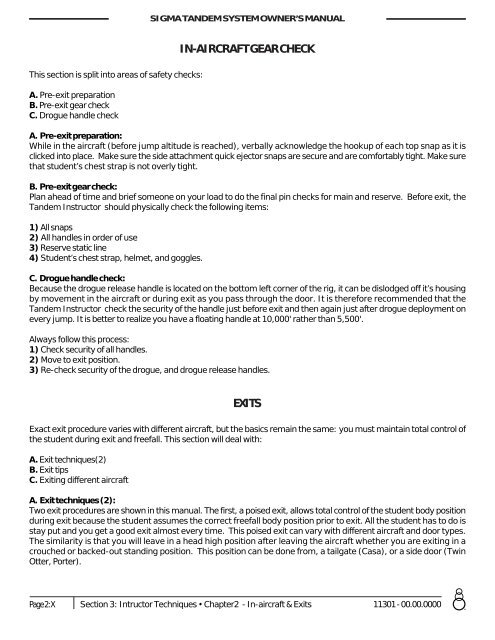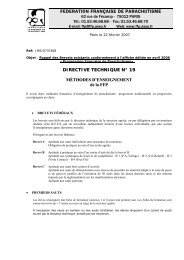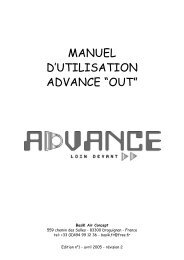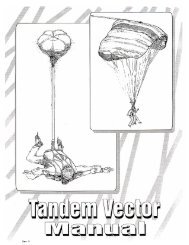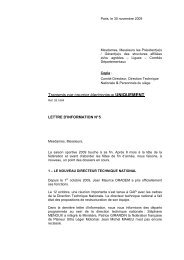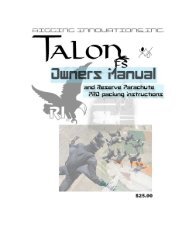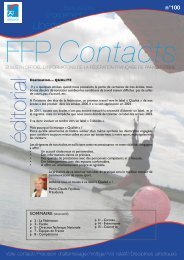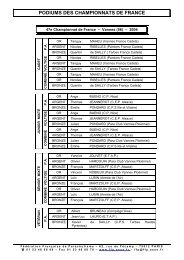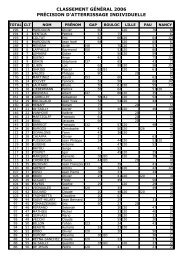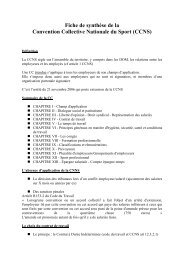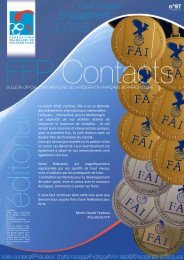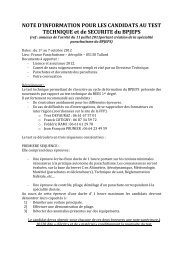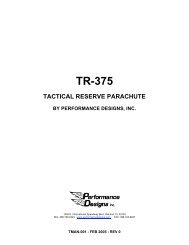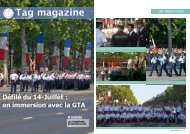tandem vector owner's manual
tandem vector owner's manual
tandem vector owner's manual
You also want an ePaper? Increase the reach of your titles
YUMPU automatically turns print PDFs into web optimized ePapers that Google loves.
SIGMA TANDEM SYSTEM OWNER’S MANUAL<br />
IN-AIRCRAFT GEAR CHECK<br />
This section is split into areas of safety checks:<br />
A. Pre-exit preparation<br />
B. Pre-exit gear check<br />
C. Drogue handle check<br />
A. Pre-exit preparation:<br />
While in the aircraft (before jump altitude is reached), verbally acknowledge the hookup of each top snap as it is<br />
clicked into place. Make sure the side attachment quick ejector snaps are secure and are comfortably tight. Make sure<br />
that student’s chest strap is not overly tight.<br />
B. Pre-exit gear check:<br />
Plan ahead of time and brief someone on your load to do the final pin checks for main and reserve. Before exit, the<br />
Tandem Instructor should physically check the following items:<br />
1) All snaps<br />
2) All handles in order of use<br />
3) Reserve static line<br />
4) Student’s chest strap, helmet, and goggles.<br />
C. Drogue handle check:<br />
Because the drogue release handle is located on the bottom left corner of the rig, it can be dislodged off it’s housing<br />
by movement in the aircraft or during exit as you pass through the door. It is therefore recommended that the<br />
Tandem Instructor check the security of the handle just before exit and then again just after drogue deployment on<br />
every jump. It is better to realize you have a floating handle at 10,000' rather than 5,500'.<br />
Always follow this process:<br />
1) Check security of all handles.<br />
2) Move to exit position.<br />
3) Re-check security of the drogue, and drogue release handles.<br />
EXITS<br />
Exact exit procedure varies with different aircraft, but the basics remain the same: you must maintain total control of<br />
the student during exit and freefall. This section will deal with:<br />
A. Exit techniques(2)<br />
B. Exit tips<br />
C. Exiting different aircraft<br />
A. Exit techniques (2):<br />
Two exit procedures are shown in this <strong>manual</strong>. The first, a poised exit, allows total control of the student body position<br />
during exit because the student assumes the correct freefall body position prior to exit. All the student has to do is<br />
stay put and you get a good exit almost every time. This poised exit can vary with different aircraft and door types.<br />
The similarity is that you will leave in a head high position after leaving the aircraft whether you are exiting in a<br />
crouched or backed-out standing position. This position can be done from, a tailgate (Casa), or a side door (Twin<br />
Otter, Porter).<br />
Page 2:X Section 3: Intructor Techniques • Chapter2 - In-aircraft & Exits 11301 - 00.00.0000


